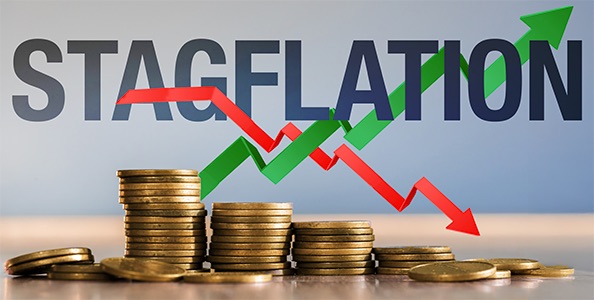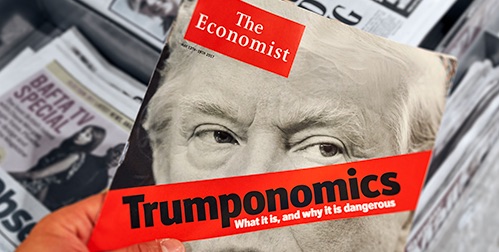- Goldman Sachs advises ‘Go for Gold’ – predicting it will break $3,000 an ounce in 2025.
- Record breaking demand is fueled by central bank demand, interest rate cuts, inflation, and global conflict.
- Physical precious metals held in a Gold IRA offer long term wealth protection and potential growth.
‘Go for Gold’ says Goldman Sachs
Russia’s recent threat of nuclear war caused gold prices to spike. But that is just the latest reason for gold to surge., Gold has been a standout performer in 2024. It recently hit a major milestone. A standard 400-ounce gold bar is now valued at $1 million. And the precious metal’s rally is far from over. Goldman Sachs is now telling clients to “Go for gold.” The investment giant predicts that gold prices could reach $3,000 per ounce by the end of 2025. Gold AND silver both offer a hedge against economic uncertainty and a potentially lucrative growth opportunity.1
Goldman Sachs’ Bullish Case for Gold
 2
2
Goldman Sachs has laid out several compelling reasons why gold is set to climb even higher in the coming years:
Central Bank Demand
Global central banks continue to buy gold as part of a diversification strategy away from the U.S. dollar. While the pace of buying has slowed slightly, demand remains near record levels. This trend is partly driven by growing U.S. debt, which makes Treasury bonds less appealing. Central banks see gold as a more stable and reliable reserve asset in the face of rising debt levels.
Federal Reserve Rate Cuts
Gold prices tend to thrive during periods of monetary easing. And with unemployment on the rise, more rate cuts are likely on the horizon. Goldman Sachs analysts believe lower rates will help stabilize gold prices above $2,600 per ounce. The cuts set the stage for continued growth.
Furthermore, potential political interference may undermine the independence of the Federal Reserve. As a result, confidence in the U.S. dollar could falter, driving investors toward gold.
A Hedge Against Inflation
Inflationary pressures are re-emerging. The two major measures of inflation both rose in October. And they are poised to go up. Trump’s proposed tariffs may result in higher prices. Economists estimate they could cost the average U.S. household $2,600 annually. The tariffs would likely result in a rise in trade tensions, which would also help inflate gold prices.3
Geopolitical Uncertainty
Ongoing global conflicts are likely to support gold demand. Especially as the wars in Ukraine and the Middle East grow hotter. The threat of global economic instability is driving investors to take a “flight to safety.” As gold proves itself to be a stable store of value in times of crisis.
The Technical Case for Gold
Gold’s bullish momentum isn’t just about economic fundamentals—it’s supported by strong technical indicators:
Historical Patterns: Since 1980, gold has gone through several bull and bear cycles. Key recovery periods like 2004, 2011, and 2024 highlight its resilience.
Breakouts Across Markets: Gold has reached all-time highs in major currencies, such as the Swiss Franc. This signals broad-based strength.
Silver/Gold Ratio Stability: Unlike past gold peaks, the silver/gold ratio isn’t spiking. An indicator that market sentiment isn’t overheated.
Relative Strength vs. Stocks: Gold’s strength against regional stock indices highlights its potential for long-term outperformance. And for the first time in 12 years, gold is outperforming emerging-market stocks.
As Goldman Sachs notes, inflation and geopolitical concerns are likely to keep gold on an upward trajectory. They recognize it as a critical portfolio diversifier.

Silver Is Also on the Rise
While gold has captured much of the spotlight, silver is quietly making its own headlines. According to the Silver Institute, silver demand is expected to exceed 1.2 billion ounces in 2024. A new record. Meanwhile, significant supply constraints are leaving a deficit of over 200 million ounces.4
Why Silver Is Gaining Momentum
Silver’s unique combination of investment appeal and industrial demand makes it a standout option:
Hedge Against Inflation and Instability: Like gold, silver serves as a hedge against inflation, currency devaluation, and systemic financial risks.
Dual Demand: Silver’s role as both a safe-haven asset and a key industrial component in the green economy has driven its price higher. Since March 2020, silver has outperformed many other commodities. That’s due to spiking demand for renewable energy technologies and electronics.
Interest Rate Impact: A recent report highlights silver’s historical performance during interest rate cuts.
“Monetary easing cycles are generally positive for the Silver Price,” the report states. “Since 1981, silver has risen in 6 out of the 7 easing cycles for an average gain of 16.8%.”5
A Supercycle in the Making: Analysts believe silver may be entering a supercycle, with price upswings lasting 10 to 20 years. While short-term volatility is possible, the overall trend is expected to remain upward.
Supply Constraints: The growing deficit in the silver market—driven by surging demand and limited supply—adds further support to prices. With industrial demand rising, silver’s long-term prospects remain strong.
Conclusion
Gold prices pulled back slightly after the election. The World Gold Council called the drop a buying opportunity:
“The gold price consolidation following the orderly U.S. election—flushing speculative positioning from near all-time highs—provides an attractive entry point to buy gold,” the council noted in its 2025 commodities outlook.6
Gold and silver are both positioned for sustained growth. Institutions and individuals are seeking refuge from inflation, geopolitical tensions, and economic uncertainty. The case for protecting your wealth with precious metals has never been stronger. And a Gold IRA from American Hartford Gold offers long-term security against financial turmoil. Call 800-462-0071 now to learn how you can secure your financial future with precious metals.



 2
2




 3
3



 2
2

 4
4

